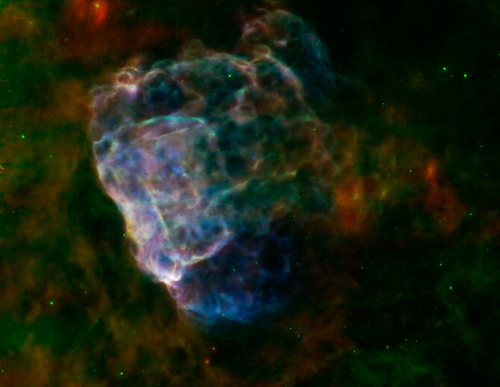
(Photo Credit: NASA/ESA/JPL-Caltech/GSFC/IAFE)
The results of a destructive supernova explosion have been captured in infrared and X-ray light in this image from NASA’s Spitzer Space Telescope, the Chandra X-Ray Observatory, and the European Space Agency’s XMM-Newton.
This misshapen bubble cloud is actually an irregular shock wave, generated by a supernova that would have been witnessed on Earth 3700 years ago.
The remnant itself, known as Puppis A, is located around 7,000 light-years away. The shock wave bubble is about 10 light-years across.
Astronomers have calculated that the total quantity of dust in the region is equal to about a quarter of the mass of our sun.
The shock wave appears to light up and glow as it slams into surrounding clouds of dust and gas, but data collected from Spitzer’s infrared spectrograph has revealed that the shock wave is actually breaking apart the fragile dust grains.
Supernova explosions can create the raw materials from which future generations of stars and planets will form. Studying how supernova remnants expand into the galaxy and interact with other material can provide critical clues into our own origins.